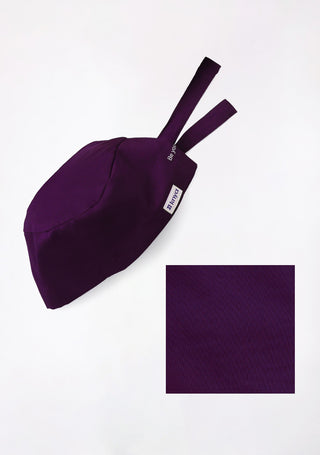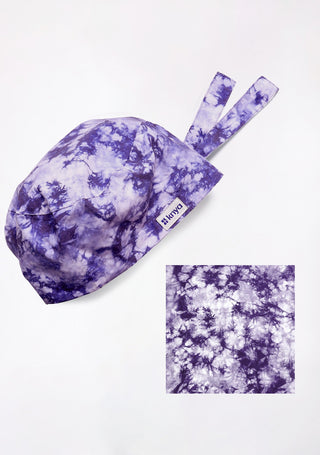In the grand scheme of healthcare duties, washing your scrubs might feel like a small detail. However, it’s these "small" details that protect lives. Properly laundering medical apparel ensures that scrubs remain a protective barrier rather than a source of contamination.
By following best practices — from careful transport and hot water washing to thorough drying and careful storage — healthcare professionals can minimize cross-contamination risks significantly.
Why Medical Apparel Hygiene is Crucial?
Scrubs Are Germ Magnets:
Throughout a typical shift, healthcare workers are exposed to numerous contaminants — from bacteria and viruses to bodily fluids. Scrubs can easily harbor harmful pathogens, which can then be transmitted to other patients, co-workers, or even family members if not properly cleaned.
Cross-Contamination Is a Real Risk:
Cross-contamination can occur when microorganisms are transferred from one surface or person to another. Dirty scrubs can act as a vehicle for these germs, increasing the risk of hospital-acquired infections (HAIs), which are already a significant concern in medical facilities.
Protecting Yourself and Others:
By following strict apparel hygiene practices, healthcare workers protect not just their patients, but themselves, their coworkers, and their families.
Common Mistakes in Laundering Medical Apparel
Even though most healthcare workers understand the importance of clean scrubs, simple mistakes in laundering can compromise hygiene:
- Washing scrubs with everyday clothes: This can transfer pathogens to regular clothing.
- Not using hot water: Warm or cold water may not effectively kill bacteria and viruses.
- Skipping pre-treatment: Stains from blood or bodily fluids need pre-treatment to remove contaminants thoroughly.
- Infrequent cleaning: Wearing scrubs multiple times without washing between shifts increases infection risk.
- Improper drying: Damp clothes can encourage bacterial growth if not dried completely.
Knowing these pitfalls is the first step to adopting safer laundering practices.
Best Scrubs Collection
Best Practices for Laundering Medical Scrubs
Here’s a step-by-step guide to properly wash your scrubs to maintain maximum hygiene:
Designate Work-Only Scrubs
Invest in a set of scrubs that are worn only in clinical settings. Avoid using them outside the healthcare environment (even for quick errands) to limit exposure and contamination.
Transport Scrubs Safely
If you’re not allowed to launder scrubs on-site:
- Place dirty scrubs in a separate, washable bag or disposable plastic bag before heading home.
- Keep them isolated from other clothes, car seats, or personal items.
Pre-Treat Visible Stains
Before tossing scrubs into the washer:
- Inspect for stains, especially from blood or fluids.
- Use a hydrogen peroxide solution or a stain remover specifically designed for protein-based stains.
- Let it sit for a few minutes before washing.
This helps ensure that contaminants are broken down before the main wash.
Use a Hot Water Cycle
Temperature is crucial:
- Hot water (at least 60°C or 140°F) is recommended to kill most bacteria and viruses.
- If the fabric’s label warns against hot water, use the hottest temperature safe for the material.
Adding a disinfectant laundry additive like oxygen bleach or a special antibacterial detergent can further enhance germ-killing power.
Explore All Women's Scrub
Separate from Regular Laundry
Always wash scrubs separately from everyday clothes:
- This avoids spreading hospital-grade germs to home wear.
- Use a dedicated laundry load just for medical uniforms.
If possible, clean the washing machine with a hot, empty cycle and a disinfectant afterward.
Double Rinse for Extra Cleanliness
Running an extra rinse cycle helps remove any lingering detergent, pathogens, or debris from the scrubs, ensuring a thorough clean.
Dry Thoroughly — High Heat Recommended
Drying scrubs at high temperatures helps kill residual pathogens:
- Use the highest heat setting safe for the fabric.
- Make sure scrubs are completely dry before folding or wearing them.
If you air-dry, ensure they dry under direct sunlight, which has natural antibacterial properties.
Iron If Necessary
Some healthcare workers iron their scrubs for an added layer of protection:
- High-temperature ironing can further help eliminate any remaining germs.
- Plus, neatly ironed scrubs present a professional appearance.
Store Clean Scrubs Properly
Once laundered:
- Store scrubs in a clean, dry area away from pets, dirty laundry, and kitchen spaces.
- Preferably, keep them sealed in a clean bag or dedicated drawer until use.
Bonus Tips for Maintaining Scrub Hygiene at Work
- Change scrubs immediately if visibly soiled during a shift.
- Use disposable gowns or aprons over scrubs when dealing with high-risk patients.
- Avoid sitting in public spaces in scrubs if possible before changing.
- Follow facility protocols for laundering if on-site services are provided.
Institutional Responsibility: The Bigger Picture
While individual practices are critical, healthcare institutions must also prioritize uniform hygiene:
- Many hospitals provide on-site laundering to ensure scrubs are properly disinfected.
- Facilities can offer changing rooms to prevent professionals from wearing scrubs home.
- Clear guidelines and education programs about apparel hygiene should be part of workplace policies.
- When both individuals and organizations are committed to proper apparel care, infection control becomes much more effective.












